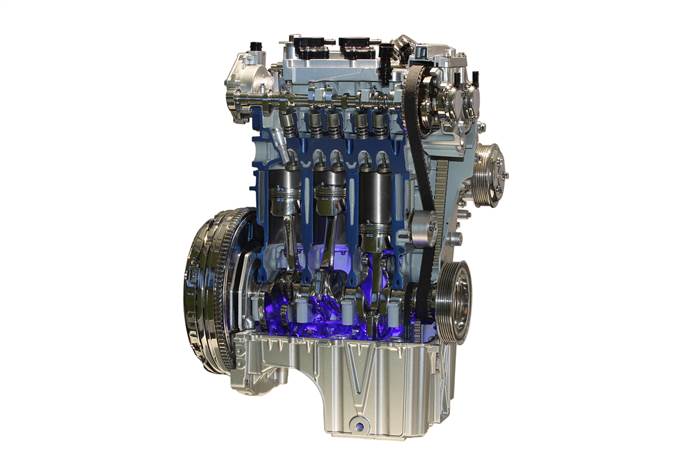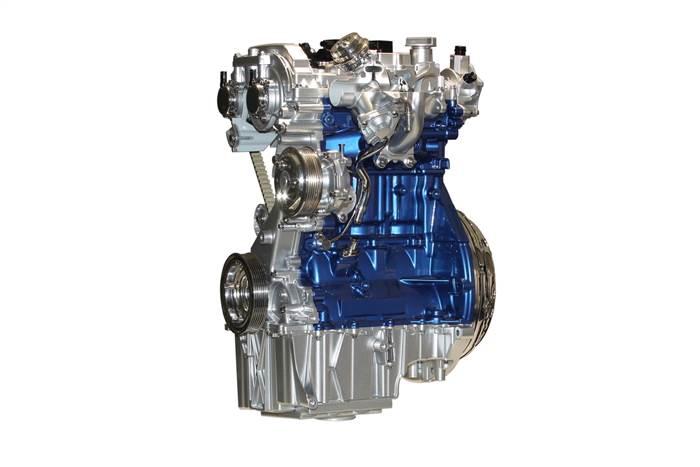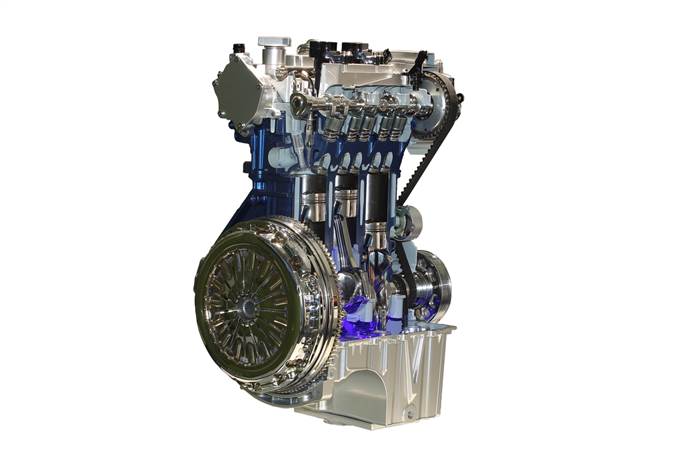Ford is proud of the EcoBoost engine under the hood of the new EcoSport and rightly so. This pint-sized 1.0-litre engine is so good, it won the 2012 International Engine of the Year award and joins past winners that include BMW’s legendary V10 in the old M5 and Volkswagen’s complex but effective 1.4-litre twin-charger unit.
In addition to this, the EcoBoost set 16 land speed records at a racetrack in France last year, and was awarded the Popular Mechanics Breakthrough award among others.
Here’s a quick look at why it won these awards.
The EcoBoost engine, despite its small displacement, makes 123bhp and 17.3kgm of torque (from as low as 1400rpm), which is roughly what you would previously get from a relatively bigger engine. The EcoBoost, in line with the global trend of downsizing engines, is a three-cylinder unit that runs on petrol, uses a cast iron block, direct-injection technology and a turbo-charger. It’s a twin-cam design that’s variable valve timing enabled on both camshafts and breathes through a four-valve head. So, while there’s nothing spectacular in these basic specs, it’s special in how compact it is and how Ford has found clever ways to smoothen out the naturally unbalanced three-cylinder engine.
Most three-cylinder units use a counter rotating balancing shaft (that rotates in the opposite direction of the crankshaft) to cancel vibrations, but this adds to the weight and extra internal friction of the engine. So, the NVH team at the Ford Technical Center in Dunton, England decided not to use a balancer shaft and focus on two other areas – the engine’s front pulley and the rear flywheel. Both are unbalanced with carefully placed weights that counteract the natural vibrations of the engine. The cast iron block and the interated engine mounting bracket also help smoothen it out and absorb engine noise.
In addition to this, the toothed rubber timing belt is immersed in oil and the engine’s multiple injections per cycle help keep noise levels down.
Ford also paid attention to cutting down friction losses by focusing closely on bearing sizes, piston ring tension and thermal management. Not using a balancer shaft has also helped here. Ford also claims that the three-cylinder engine has roughly 25 percent fewer moving parts than a four-cylinder motor.
The engine block is so compact and light that Ford claims it fits into airplane hand baggage or sits comfortably on an A4-sized sheet of paper.
India will be one of the first markets in the world to get the 1.0-litre EcoBoost engine and with the gap between petrol and diesel prices narrowing and the EcoSport’s imminent launch, Ford seems to have got their timing just right. If the Ecoboost engine proves to be as efficient, smooth and powerful as Ford claims it is, there’s a lot for you to look forward to.
More on the Ford EcoSport





Comments
Member Login
Personal Details
No comments yet. Be the first to comment.